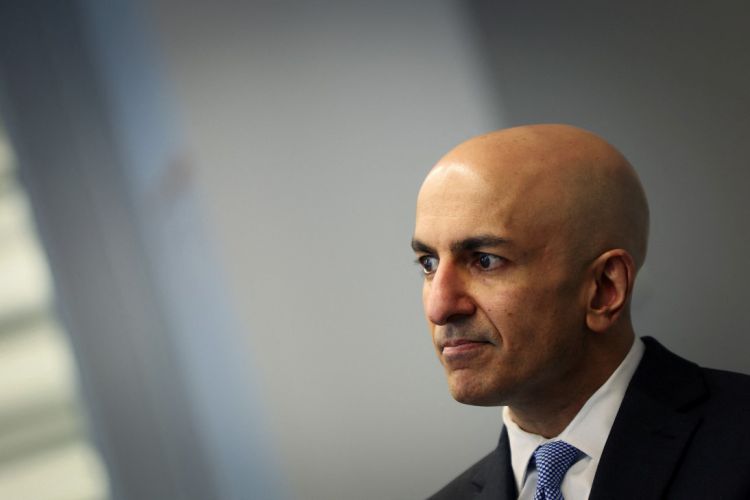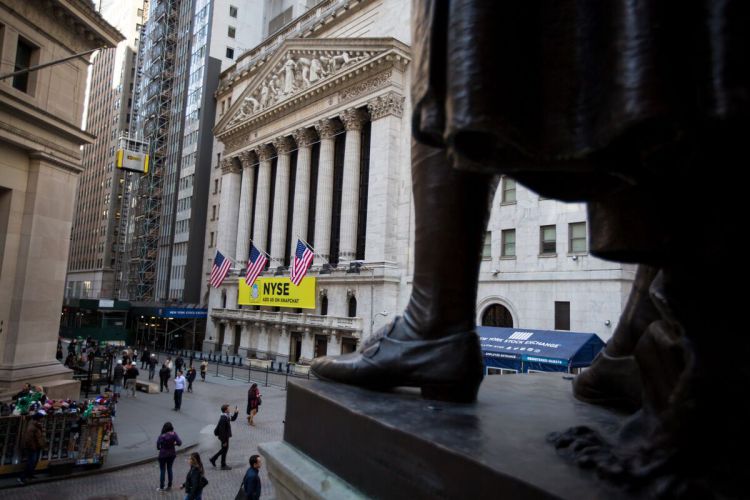The official’s stance signals a focus on inflation data to guide future rate decisions. By emphasizing the importance of inflation metrics, the Fed aims to ensure economic stability and growth. This strategy underscores the central bank’s commitment to fostering a balanced and sustainable economic environment.
It also highlights the intricate relationship between inflation dynamics and monetary policy. As the Fed navigates evolving economic conditions, its emphasis on inflation progress underscores a deliberate and data-driven approach to shaping monetary policy.
 Credit: www.foxbusiness.com
Credit: www.foxbusiness.com
Inflation And Economic Policy
Inflation and economic policy play crucial roles in shaping the financial landscape of a country. As prices rise and the purchasing power of money decreases, the economy’s stability can be at risk. The Federal Reserve, as the central bank of the United States, plays a significant role in managing inflation and guiding economic policy.
The Role Of The Federal Reserve
The Federal Reserve, often referred to as the Fed, is responsible for implementing monetary policies that aim to maintain price stability and promote sustainable economic growth. One of the key tools at the Fed’s disposal is the adjustment of interest rates. By raising or lowering interest rates, the Fed can influence borrowing costs, spending, and investment, which in turn affects inflation.
Current Inflation Trends
Understanding the current inflation trends is essential for the Federal Reserve to make informed decisions regarding economic policy. Inflation, measured by indicators such as the Consumer Price Index (CPI), indicates the rate at which prices for goods and services are increasing. It provides insights into the economy’s overall health and helps the Fed determine whether monetary policy adjustments are necessary.
Recent data suggests that inflation in the United States has been gradually increasing, but the pace remains below the Fed’s target of 2%. The Fed closely monitors factors such as employment levels, wage growth, and market conditions to gauge the strength of the economy and the potential impact on inflation. This data-driven approach allows the Fed to make informed decisions that strike a balance between promoting growth and maintaining price stability.
Given the current economic landscape, a top Fed official has emphasized the importance of significant progress on inflation before considering any rate cuts. This cautious approach aims to ensure that the economy is on a sustainable path and that any adjustments to interest rates align with the Fed’s goals of maintaining price stability and fostering economic growth.
As the Federal Reserve continues to navigate the complex relationship between inflation and economic policy, their actions will have far-reaching implications on businesses, consumers, and the overall financial well-being of the nation. By carefully monitoring inflation trends and implementing appropriate policies, the Fed strives to create a stable economic environment that benefits everyone.
Recent Statements From Top Fed Officials
Recent statements from top Fed officials have shed light on the approach towards potential rate adjustments and the conditions necessary for a rate cut. It’s essential to understand the perspective on rate adjustments and the specific conditions that the Federal Reserve is considering before making any decisions.
Perspective On Rate Adjustments
The perspective on rate adjustments provided by top Fed officials indicates a cautious approach towards potential changes. Officials emphasize the need for significant progress on inflation before considering any rate cuts. This perspective reflects a focus on maintaining a balance between economic growth and price stability.
Conditions For A Rate Cut
Top Fed officials have outlined specific conditions that would warrant a rate cut. These conditions include substantial progress towards achieving the inflation target and sustained economic expansion. The emphasis on these conditions underscores the importance of a proactive approach to maintaining a stable and robust economic environment.
The Path To Reducing Inflation
In the quest to reduce inflation, the top Fed official has emphasized the need for significant progress before considering a cut in rates. This approach reflects a cautious stance aimed at ensuring stable economic growth while addressing the challenge of rising prices. As the economy continues to navigate the impact of the pandemic, the path to reducing inflation becomes a critical focal point for policymakers and market participants alike.
Monetary Policy Tools
The Federal Reserve employs a variety of monetary policy tools to influence the economy. These tools include open market operations, discount rate changes, and reserve requirements. Each of these mechanisms plays a crucial role in shaping the overall monetary landscape and can have a direct impact on inflation dynamics.
Impact Of Interest Rate Changes
Interest rate changes are a key component of the Fed’s monetary policy arsenal. By adjusting the federal funds rate, the central bank seeks to influence borrowing costs, spending, and investment. These changes can ripple through the economy, affecting consumer behavior, business decisions, and overall inflationary pressures.
Understanding Rate Cuts
A top Fed official has stated that significant progress on inflation is necessary before any rate cuts. Understanding rate cuts is crucial for investors to make informed decisions about their investments.
Understanding Rate Cuts When it comes to monetary policy, one term that frequently pops up is “rate cuts.” But what exactly are rate cuts and why do they matter? In this section, we will delve into the benefits of lower interest rates as well as the risks and limitations associated with them.
Benefits Of Lower Interest Rates
Lower interest rates can have several positive effects on the economy. Let’s take a look at some of the key benefits: 1. Increased borrowing and investment: When interest rates are low, it becomes more affordable for individuals and businesses to borrow money. This can stimulate investment in various sectors, such as housing, infrastructure, and businesses expansion. As a result, economic growth is boosted. 2. Enhanced consumer spending: Lower interest rates can also encourage consumer spending. With reduced borrowing costs, people are more likely to take out loans for purchasing big-ticket items like cars and houses. This increased spending can stimulate demand, leading to an overall boost in economic activity. 3. Stimulated exports: Lower interest rates can make a country’s exports more competitive by lowering the cost of borrowing for businesses. This can lead to increased export activity, which can help improve the balance of trade and contribute to economic growth.
Risks And Limitations
While rate cuts have their advantages, it’s important to consider the risks and limitations associated with them: 1. Inflationary pressure: Lower interest rates can potentially fuel inflationary pressures in the economy. When borrowing becomes cheaper, consumers and businesses may increase their spending, leading to higher demand for goods and services. This increased demand can push up prices, potentially eroding the purchasing power of consumers and reducing overall economic stability. 2. Potential asset bubbles: With lower interest rates, investors may be more inclined to seek higher returns by investing in assets like stocks or real estate. This increased demand can drive up prices, potentially creating asset bubbles that could burst, leading to financial instability. 3. Limited effectiveness in a recession: While rate cuts can be effective in stimulating economic activity during normal times, their effectiveness may be limited during severe economic downturns. When the economy is facing deep-rooted structural issues, such as high unemployment or lack of consumer demand, rate cuts alone may not be sufficient to bring about a significant recovery. In conclusion, rate cuts can have both positive and negative consequences for the economy. While they can stimulate borrowing, investment, and consumer spending, they can also lead to inflationary pressures and potential asset bubbles. It’s crucial for policymakers to carefully assess the economic conditions and consider the potential risks and limitations before implementing rate cuts as a monetary policy tool.
Economic Indicators To Watch
Monitoring key economic indicators is crucial in understanding the overall health of the economy. Two significant indicators to watch closely are Employment and Wage Growth and the Consumer Price Index (CPI).
Employment And Wage Growth
Employment and wage growth are essential factors in evaluating the economy’s strength. Rising employment and wages indicate a robust economy.
Consumer Price Index (cpi)
The Consumer Price Index (CPI) measures the average change over time in the prices paid by consumers for goods and services. It is a vital indicator of inflation.

Credit: finance.yahoo.com
Global Factors Influencing Inflation
The Federal Reserve officials have been closely monitoring the inflation rates and the economic growth of the country. However, there are several global factors that contribute to the inflation rate of the country. In this section, we will discuss the two major global factors influencing inflation, which are international trade dynamics and foreign monetary policies.
International Trade Dynamics
The international trade dynamics play a significant role in determining the inflation rate of the country. The trade agreements, tariffs, and sanctions imposed by the countries on each other have a direct impact on the prices of goods and services. The increase in tariffs and sanctions leads to an increase in the prices of imported goods, which ultimately results in inflation. For instance, the US-China trade war has resulted in an increase in the prices of several goods, including electronic items, which has contributed to inflation in the US.
Foreign Monetary Policies
The monetary policies of foreign countries also have a significant impact on the inflation rate of the US. The increase in interest rates by foreign central banks leads to an appreciation of the dollar, which ultimately results in lower inflation rates in the US. On the other hand, if the foreign central banks lower their interest rates, it leads to a depreciation of the dollar, which ultimately results in higher inflation rates in the US. For instance, the European Central Bank’s decision to lower its interest rates has resulted in a depreciation of the Euro, which has ultimately led to an increase in the inflation rate of the US.
Public And Market Reactions
When it comes to the recent announcement by a top Fed official regarding the stance on cutting rates, both the public and the market have shown significant reactions. Let’s take a closer look at the investor sentiment and consumer confidence in response to this development.
Investor Sentiment
Investors have closely monitored the Fed’s position on inflation and interest rates, which directly impacts market conditions. The announcement has led to a mixed reaction among investors, with some expressing cautious optimism while others remain wary of potential market volatility.
Consumer Confidence
The public’s confidence in the economy is closely tied to the Fed’s approach to inflation and rates. The announcement has prompted varying degrees of confidence among consumers, with some feeling reassured by the Fed’s commitment to achieving significant progress on inflation before considering rate cuts, while others may remain uncertain about the future economic outlook.
Looking Ahead
A top Fed official prioritizes significant progress on inflation before considering rate cuts. This forward-looking approach aims to ensure economic stability and sustainable growth in the future.
Looking Ahead Projected Economic Forecasts The top Fed official’s stance on inflation and interest rates has sparked curiosity about the projected economic forecasts. Many are eager to see how this will impact the financial landscape moving forward. Investors and analysts are keeping a close eye on the potential outcomes. Future Federal Reserve Meetings Future Federal Reserve meetings are anticipated to be crucial in determining the trajectory of monetary policy. The market is waiting for signals on how the Fed plans to address the current economic conditions. These meetings are likely to provide valuable insights into the central bank’s decisions.
Frequently Asked Questions
Why Won’t The Fed Cut Interest Rates?
The Fed may not cut interest rates due to several factors like inflation concerns, economic stability, and the need to maintain a balanced monetary policy. They consider various economic indicators before making any decision.
What Are Some Of The Potential Effects Of The Federal Reserve Raising Interest Rates?
Raising interest rates by the Federal Reserve can lead to increased borrowing costs for consumers and businesses. This can slow down economic growth and reduce spending. It may also strengthen the value of the dollar and impact the stock market.
Why Would A Government’s Central Bank Raise Interest Rates When Inflation Is High?
The central bank raises interest rates to curb high inflation and stabilize the economy. By making borrowing more expensive, it reduces spending, which helps to bring down prices and control inflation.
What Is The Fed Doing With Interest Rates?
The Fed is responsible for setting and adjusting interest rates to manage the economy. They may increase rates to control inflation or stimulate the economy by lowering rates. These decisions are made based on economic indicators and the overall state of the financial markets.
Conclusion
As the top Fed official emphasizes inflation progress, rate cuts require careful consideration. Market stability hinges on strategic decisions based on economic indicators. Investors eagerly await updates on the Fed’s stance, anticipating the impact on their portfolios. Understanding the nuances of this approach is crucial for financial planning.




